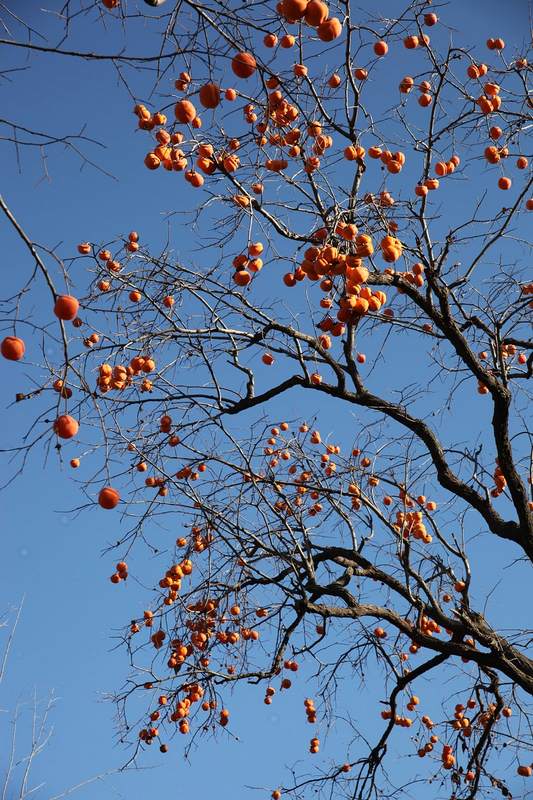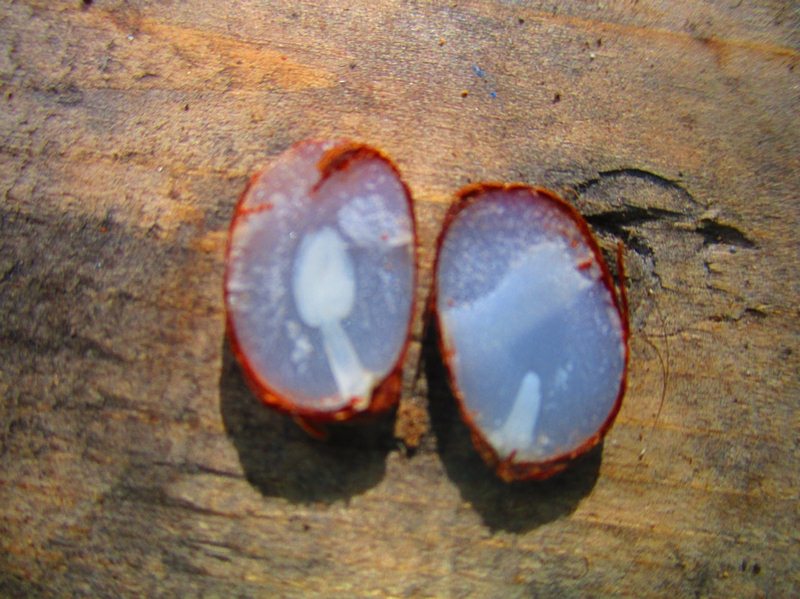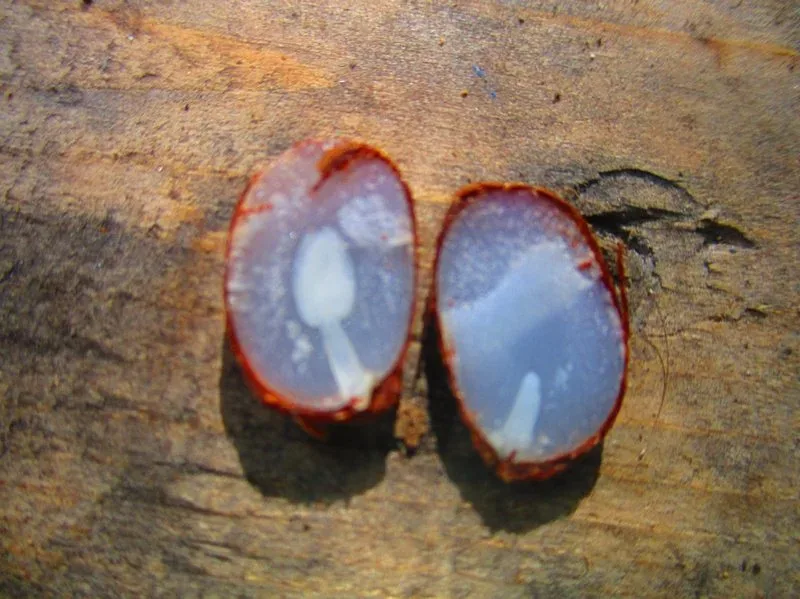Folklore says the forthcoming winter weather can be predicted by the fruit of the persimmon tree.
Different weather-related sayings were adhered to for predictions of upcoming winter weather before the Doppler radar systems and weather satellites were invented. One saying was that the common persimmon seed would tell the harshness of the coming winter weather.

By opening the seed, a “knife“, “fork“, or “spoon” could be seen. The folklore was believed to have been generated in the Ozark Mountains of Missouri and Arkansas. No one knows for sure.
Persimmon Seeds Predict Winter Weather
Read Also:
Meaning of the “Eating Utensils“
- Knife – Signifies icy cold winter weather coming with the wind that will cut through like a knife.
- Fork – Signifies a mild winter with light feathery snow in the outlook.
- Spoon – Signifies a lot of wet heavy snow to be shoveled.
In an unofficial personal survey conducted in three different locales of north-central Oklahoma, with 40 to 50 seeds, the findings were interesting.
- Cattle country – From the low rolling plains in north-central Oklahoma, the spoon totally dominated the seeds. Presumably, the drifting snow over the cattle country would pile high and need to be shoveled during the winter.
- Lake regions – The fork dominated. Since winters are relatively mild in Oklahoma, the warmer waters of the lakes possibly keep the snow to a minimum near bodies of water.
- Wooded hills of northeastern Oklahoma – The spoon totally dominated, predicting heavy snow to be shoveled.
- Only one knife was located, signifying a lack of ice and cold biting winds.
An article in the 2010 Farmer’s Almanac weather category, “Nature Agrees with Almanac’s Outlook“, reports that 98% of all seeds are spoons, predicting a cold snowy winter in the U.S. and Canada. Only 2% revealed a knife. This prediction compares favorably with the unofficial survey taken in Oklahoma.

Origin of the Persimmon Tree
Originally a native to China, the persimmon fruit tree spread to Korea, then Japan, and was introduced to California in the mid-1800s. There are two categories of fruit for the persimmon tree. One type of persimmon tree bears astringent fruit that cannot be eaten until they are soft ripe, or after the first frost, according to folklore.
An astringent cultivar must be jelly soft before it is edible and is best adapted to cooler regions (USDA Zones 7 to 10). The fruit actually matures before the first frost and is highly sought by local wildlife. If the fruit gathering is delayed until the first frost, there may not be many to gather.
A non-astringent persimmon needs hot summers to produce. These fruits can be eaten when crisp as an apple and are the fruit found in local grocery stores. The Persimmon tree, (genus Diospyros) in the original Greek term, means “food of the gods“.
The tree is used for more things than just predicting weather folklore. The wood of a mature persimmon tree is extremely hard. It is used commercially to make golf club “woods“, pool cues, and very ornamental wooden boxes, such as for jewelry.
Mountain craftsmen oftentimes selected the wood from the persimmon tree for special turned pieces as it has an unusual and interesting grain. Although lovely, wood can be difficult to work.
Whether interested in predicting the upcoming winter weather, or just curious if the local trees hold a knife, fork, or spoon, be sure to try the taste of persimmon. Gather enough for a persimmon pie. The taste of the fruit is similar to apricots, has many uses to the culinary cook, and is simply delicious.










